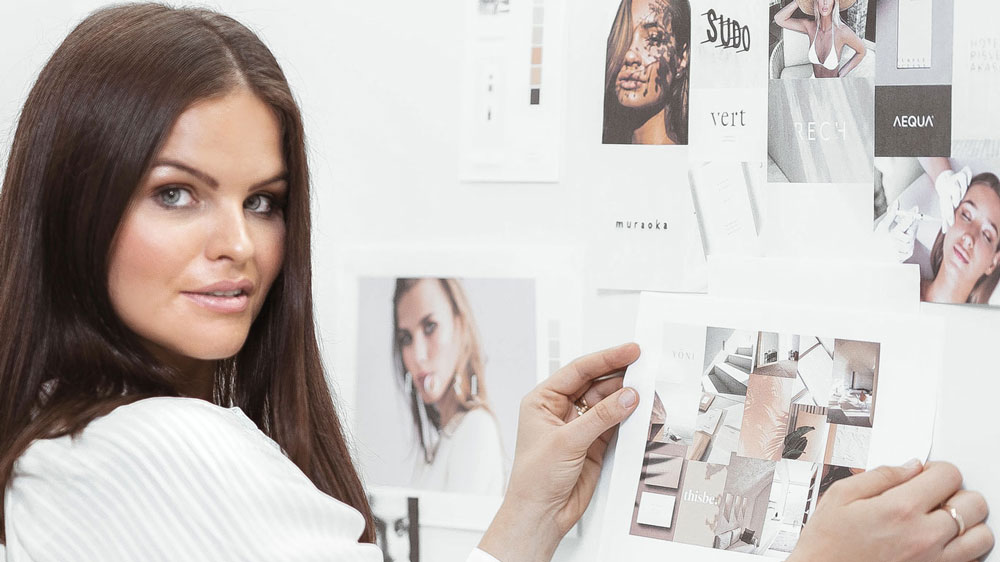
The 5 Step Process To Branding Design
WHAT IS CREATIVE BRANDING?
To properly understand what is involved in branding design and why it is so crucial for your business, let’s first recap the basics.
As defined by the American Marketing Association, a ‘brand’ is a “name, term, design, symbol, or any other feature that identifies one seller’s goods or services as distinct from those of other sellers”.
‘Branding’ therefore, is defined as “the process involved in creating a unique name and image for a product in the consumer’s mind…branding aims to establish a significant and differentiated presence in the market that attracts and retains loyal customers”.
As Seth Godin highlights, it’s not just the visual representation of your brand which sets you apart, but it’s also the emotional response it elicits from customers – does it resonate with your target audience? Is it memorable? Do the visual communications of the brand meet the expectations of your customers based on your product or industry?
“
A BRAND IS THE SET OF EXPECTATIONS, MEMORIES, STORIES AND RELATIONSHIPS THAT, TAKEN TOGETHER, ACCOUNT FOR A CONSUMER’S DECISION TO CHOOSE ONE PRODUCT OR SERVICE OVER ANOTHER.
This is where branding design steps in and takes your ideas to a whole new, effective level. Your brand is so much more than just a logo. Your brand is your number #1 selling tool. It clearly communicates who you are, what’s on offer and aims to trigger an emotional and physical response with your target market.
Your brand identity design acts like the primer under your make-up. It supports the rest of your strategy and ensures it’s effective and has longevity.
And establishing a strong brand identity from the outset is also a lot easier and more cost effective. As we highlighted in our last blog, brand strategy has a direct impact on revenue.
BRAND IDENTITY DESIGN PROCESS
So, we’ve defined what a ‘brand’ is and understand the concept of ‘branding’. Let’s now breakdown the ever so crucial first step in your brand strategy and delve into our 5-step brand design process.
STEP 1. DESIGN DIRECTION
At EJB we like to be thorough at every branding design stage and work closely with our client to ensure they’re happy and we’re projecting the vision they had in mind. We support their vision with research-backed insights. Not only do we listen and foster client ideas, but we will research, research some more and research again to ensure that the visual communications created for your brand will be successful. As mentioned the brand design is the foundation for your brand strategy, it’s important to get the look and feel right.
STEP 2. VISUAL MAPPING
Once we have a good idea of your vision and understand your market and industry, we get the creative juices flowing! Using mind maps, sketch pads and even Pinterest mood boards we compile a wide range of mock-ups. Our team collaborates and inspires one another, coming up with and rejecting many draft design concepts before we compile a short-list of design concepts.
STEP 3. CONCEPTS, FEEDBACK, REVISION
Unfortunately, there can only be one winner from the proposed brand designs. But, even the best of the best needs a little refinement. During this step we will go back and forth, reviewing and improving the design based on client feedback until it becomes greater than you ever imagined possible.
STEP 4. COLOUR THEORY
Until now everything has been done in black and white. Now it’s time to add a splash of colour! Based on your preferences and our recommendations from research, we will prepare a suite of colour versions. Colour plays a very important role and has a substantial impact on customers’ emotional response. Again, not a step we like to take lightly.
STEP 5. FILES & USAGE GUIDES
Following sign-off on the final brand design, we will prepare a guideline document outlining the design versions and examples applied across various marketing collateral. These guidelines will help ensure a consistent representation of your brand at each consumer touchpoint. We will also deliver the design art files, ready to be used across websites, social media accounts, printed collateral and more.
Until next time



Leave a Reply